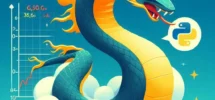Imagine giving a child a blank canvas, a box of crayons, and the freedom to create. That’s what coding should feel like for kids—not a wall of confusing symbols, but a magical playground where ideas come to life with colors, sounds, and motion.
Now picture a language that doesn’t scare them with errors, doesn’t need them to memorize code, and lets them animate a cat, build a game, or tell a story—all by snapping together colorful blocks. That language exists. It’s called Scratch, and it’s often considered the best programming language to learn for kids.

Let’s explore this playful world through a storytelling lens.
Scratch – The LEGO Land of Programming
Think of Scratch as the LEGO of the coding world. Just like kids use LEGO bricks to build castles, cars, and creatures, they use Scratch blocks to build interactive animations, games, and stories.
Here’s how it works: Instead of typing complicated code, kids drag and snap together puzzle-like pieces that represent commands.
scratchCopyEditwhen green flag clicked
repeat 10
move 10 steps
turn 15 degrees
That simple chain can make a cartoon character dance across the screen!

It’s this visual-first approach that makes Scratch the best programming language to learn for young minds. It teaches them logic, sequencing, conditionals, loops, and creativity—all without ever having to write a line of traditional code.
Why Scratch Wins the Kid’s Coding Crown
Let’s compare coding languages to musical instruments. Some are like pianos—beautiful but complex. Others are like xylophones—simple, colorful, and delightful to play with. Scratch is the xylophone. It’s the perfect first instrument to spark joy and build confidence.
Here’s what makes Scratch a winner:
- Immediate Results: Kids can see their stories, characters, and games come alive instantly.
- Community Sharing: Kids can upload their projects and see what others are creating—fueling collaboration and inspiration.
- Gamified Learning: Every project feels like play, not work.
For children aged 6 to 12, Scratch is often the best programming language to learn because it speaks their language—fun, visual, and interactive.
Honorable Mentions – Other Kid-Friendly Language
While Scratch shines as the entry point, there are other tools worth exploring as children grow older or more curious:
Blockly
Built by Google, Blockly also uses a block-based system, but it introduces more advanced logic and can transition into real code (JavaScript, Python). Think of it as Scratch’s older cousin.
Tynker
A fun platform that starts with block coding and gradually introduces Python and JavaScript. It’s gamified, full of challenges, and great for self-paced learning.
Python (For Older Kids)
Once kids feel ready to leave the block world, Python is the perfect next step. It reads like English and is less intimidating than most other languages. It’s also widely used in real-world fields like AI, robotics, and automation. For pre-teens and teens, Python becomes the best programming language to learn as they transition from playing to building.
Metaphor: Coding Like Drawing With Magic Markers
Imagine if every time a kid drew something on paper, it came to life—a dragon that flaps its wings, a spaceship that blasts off. That’s what coding with Scratch or Blockly feels like. It
But like any artist, a child will eventually crave more colors, more tools, more canvas. That’s when they graduate to text-based coding, and Python welcomes them with open arms.
Start With Magic, Grow With Logic
When introducing children to programming, the goal isn’t to turn them into software engineers overnight. It’s to spark curiosity, problem-solving, and confidence.
Scratch is the magical door to that world. It’s the best programming language to learn for kids because it makes learning feel like storytelling, art, and fun—never like homework.
And as kids grow, so does their code. From Scratch to Blockly, from Blockly to Python, every step is a brushstroke in a masterpiece of logic, creativity, and future potential.


